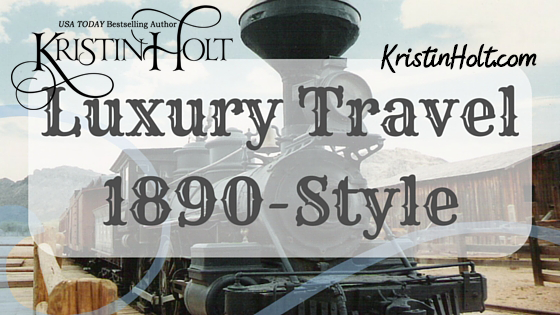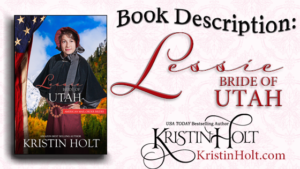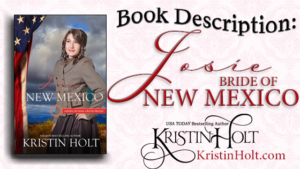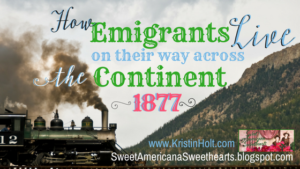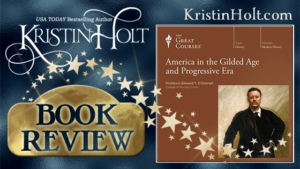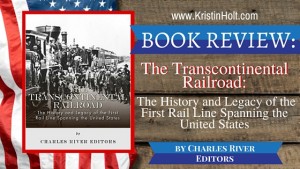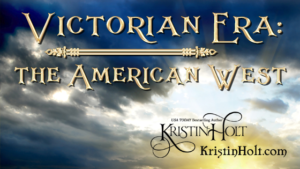Luxury Travel 1890-Style
Luxury Travel 1890-Style
.
“In the late 19th century Gilded Age, wealthy individuals had finely appointed private cars custom-built to their specifications. Additionally many cars built by Pullman, Budd, and other companies that were originally used in common carrier service as passenger cars were later converted to business and private cars. There are various configurations, but the cars generally have an observation platform, a full kitchen, dining room, state room, an observation room, and often servant’s quarters.” [Source]
.
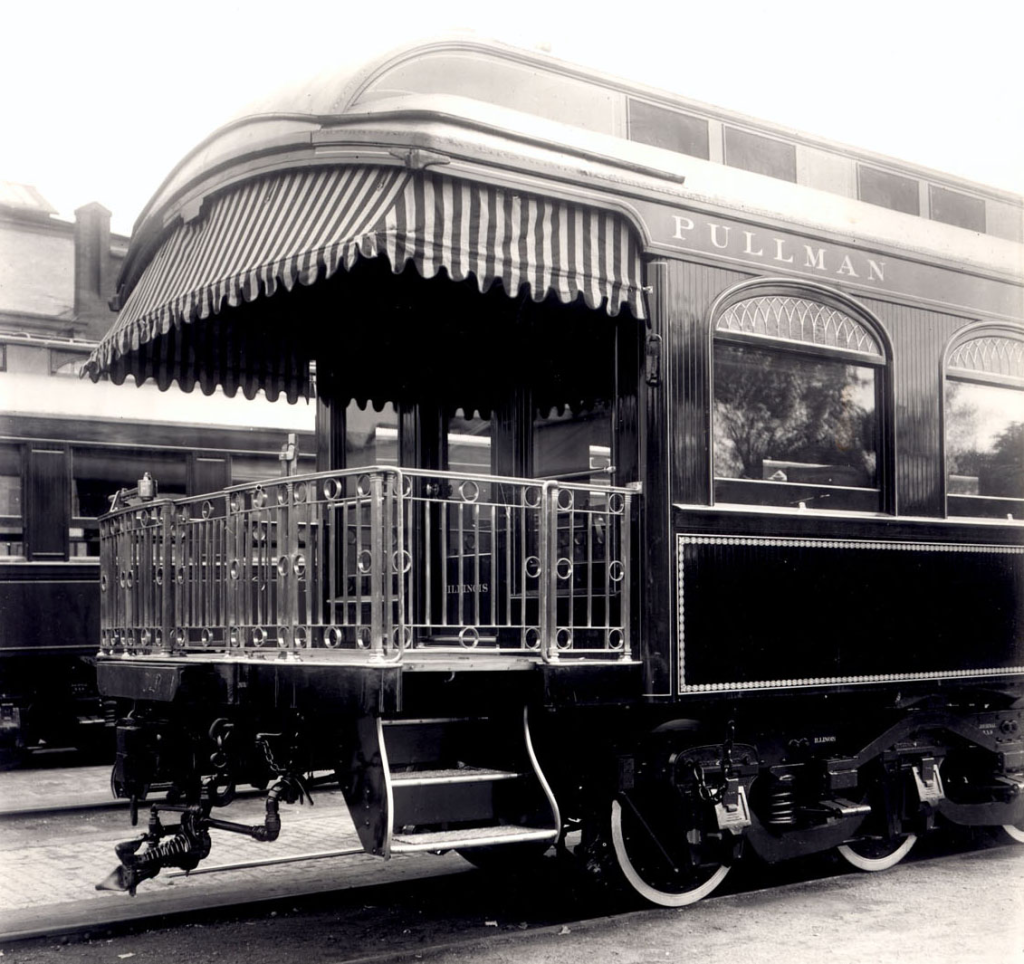
Observation Deck of Pullman Car
.
Victorians Travel Rapidly, Coast to Coast
.
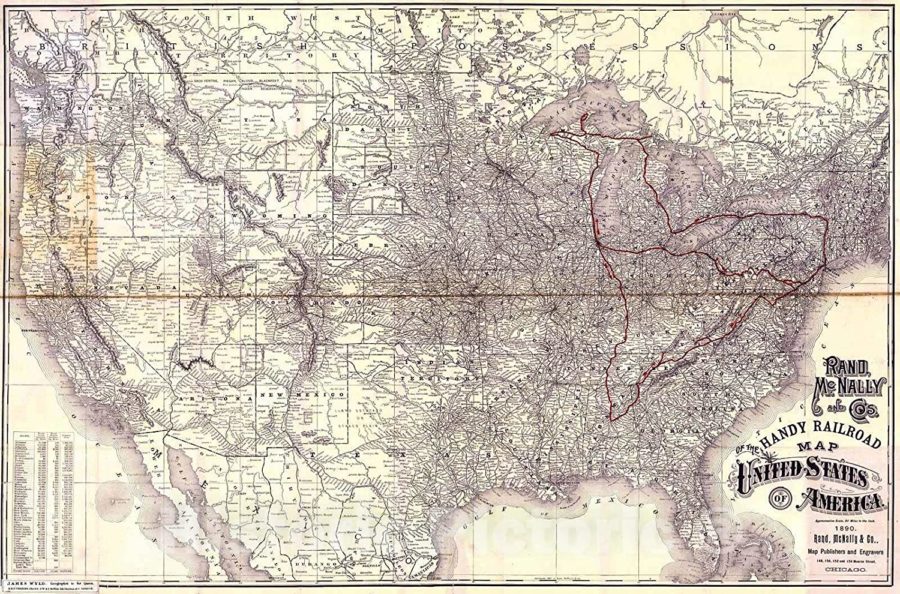
Historic Railroad Map by Rand McNally & Co. 1890. Reproduction for sale on Amazon. Note the thousands of railroad spurs from lines spanning the continent. Notice how the mid-line-to-Atlantic coast is nearly black with rail lines.
.
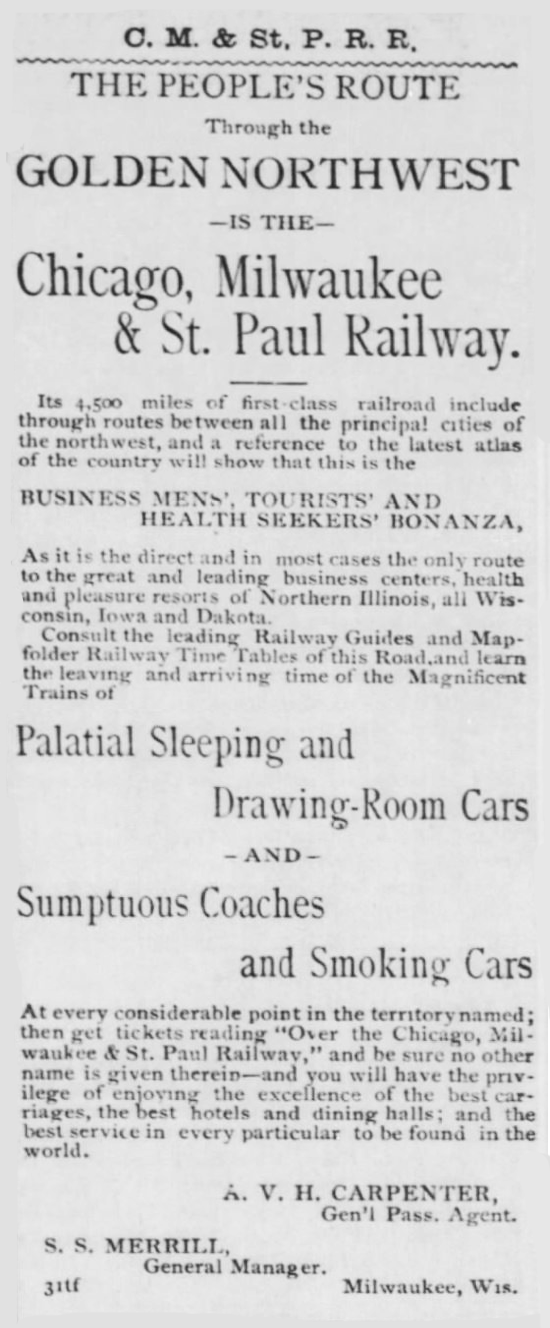
From Steuben Republican of Angola, Indiana on February 20, 1883: The Chicago, Milwaukee and St. Paul Railway advertises comfortable railway travel.
.
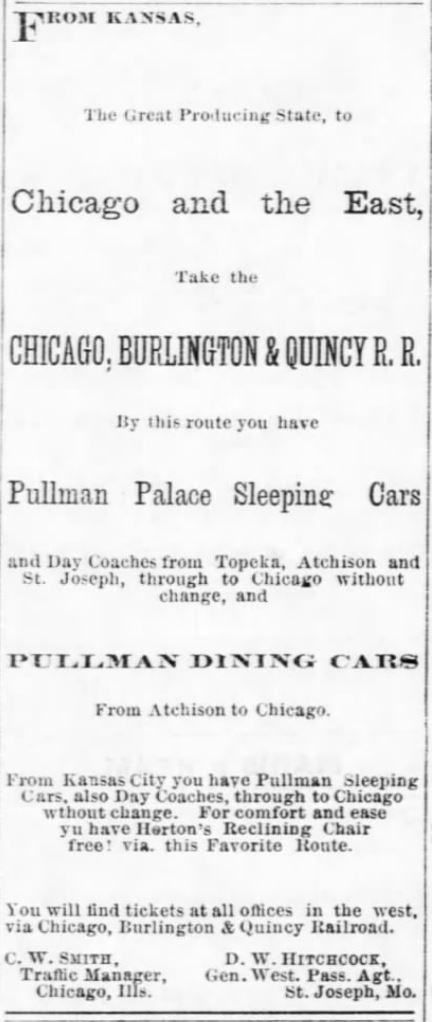
Pullman Palace Cars and Dining Cars advertised route from Atchison to Chicago and versa. Walnut Valley Times of El Dorado, Kansas on May 14, 1880.
.

.
Train Travel in Fiction: 1890
.
.
.
Lessie and Josie traveled from Massachusetts to Utah Territory to meet the men who advertised for two family-connected brides and paid their travel expenses. Both ladies traveled by standard Pullman Sleeper Car on the Overland Flyer. (The last leg from Omaha, NE; see images and content, below.) Upon their arrival, they met their grooms in The Junction of the West, Ogden City (often referred to as Junction City).
But Josie’s experience with train travel had just begun. The first half of Josie’s story is spent aboard the Cannon family private rail car.
.
.
Naturally, Cannon Mining (my fictitious creation for Lessie and Josie), peers of Carnegie and Stanford, would have traveled by the same extravagant means. If you’ve read both Lessie and Josie, you’ll know Josie had the shock (and pleasure) of enjoying the private rail car’s amenities but Lessie never stepped on board.
.

.
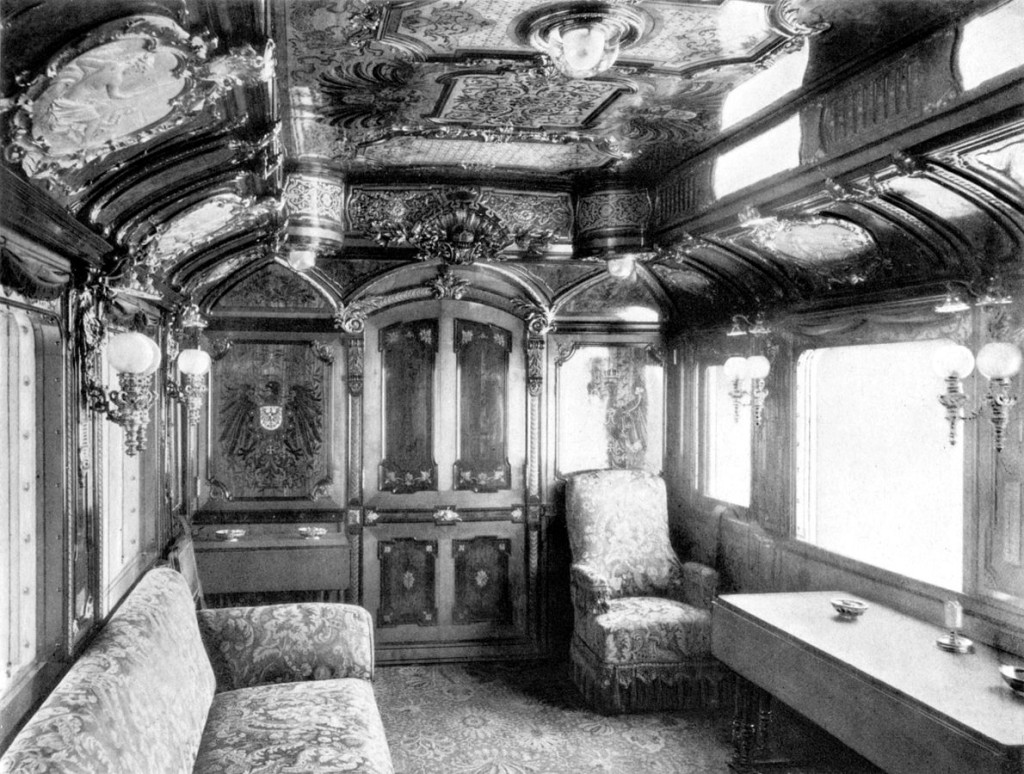
Salon No. 1 of Emperor Wilhelm II, 1890’s. Image: Public Domain. Apparently created 1890.
.
Privately owned rail cars such as these were truly private. The Emperor Wilhelm II had multiple cars, so his were strung together with vestibules between his many cars and pulled by a private locomotive. The first private railroad car was that provided by P. T. Barnum for the soprano Jenny Lind during her 1850–1852 American tour. Her rail car was singular and all-inclusive.
Railroad barons including Leland Stanford had private cars.
So did plenty of other wealthy people. Note this description of Mrs. Hopkins’s private drawing-room car:
.
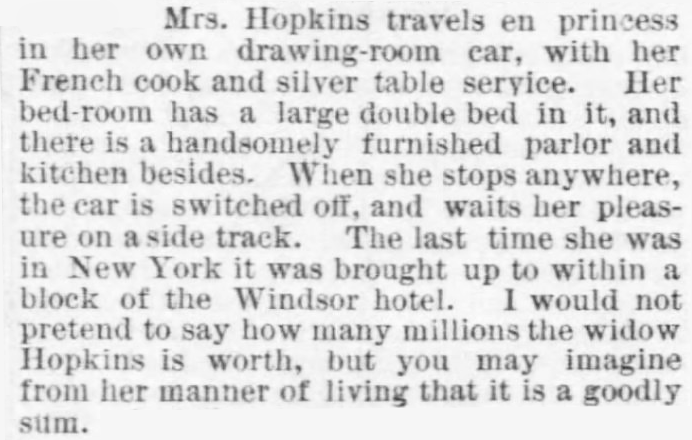
Details of Mrs. Hopkins’s luxury drawing-room car. Description of appointments, furnishings, servants, and how she stops in cities. Published in The Des Moines Register of Des Moines, Iowa, June 10, 1879.
.
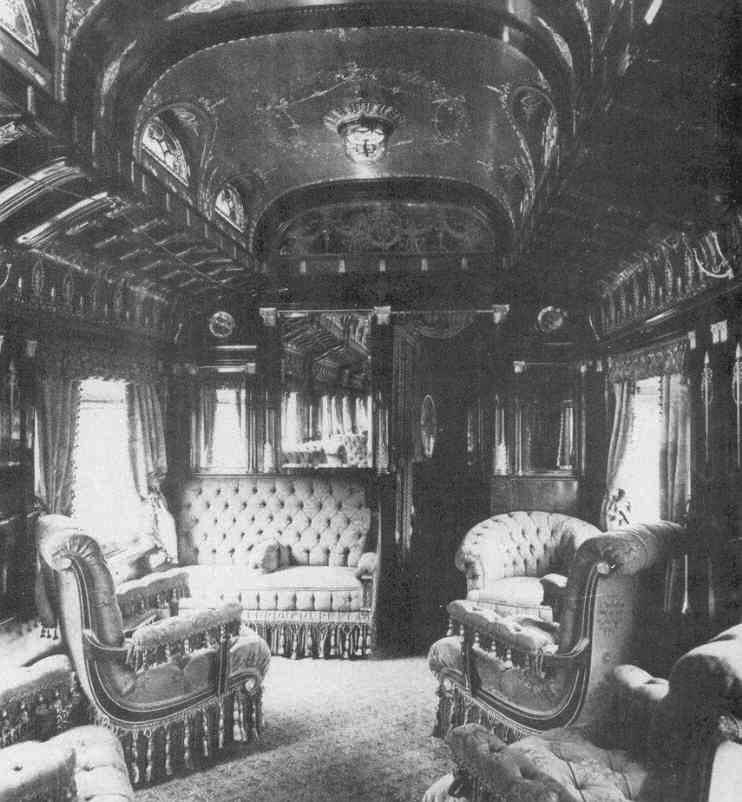
Private Rail Car Salon. Image: Public Domain
.
Various monarchies often had private locomotives and every car on the train was private and for exclusive use of the crown. In the United States, most private cars attached to a commercial train. Owners paid for transportation.
.
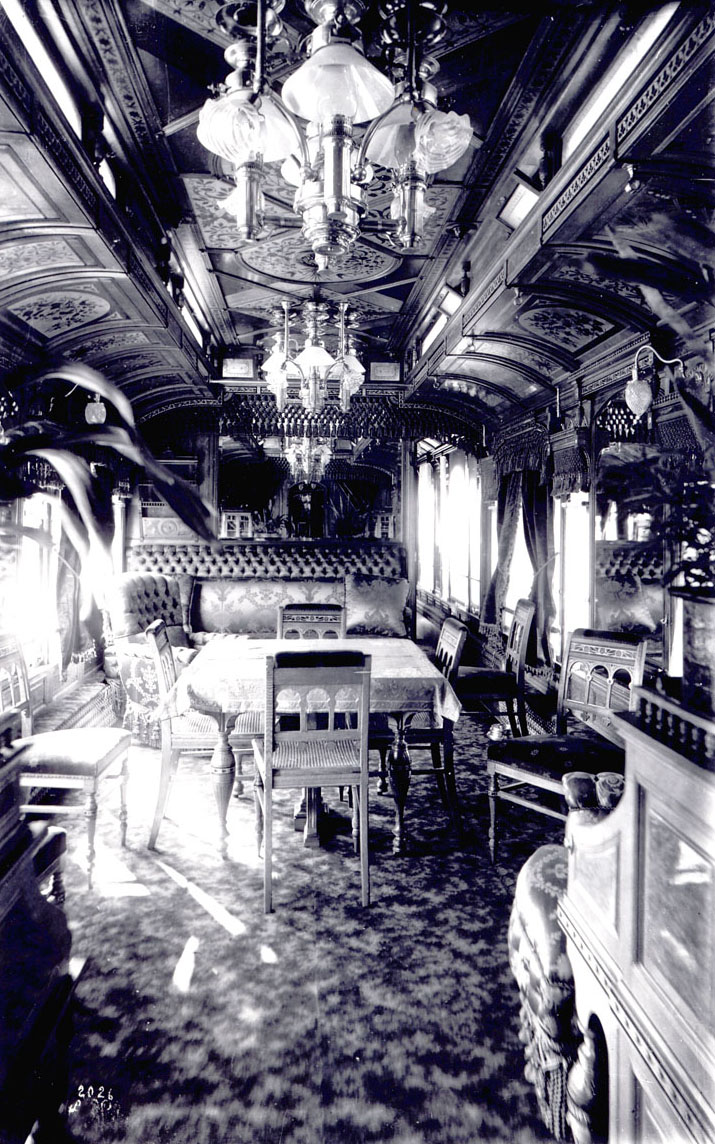
Private Car image of private dining room. Image: Public Domain.
.
While vestibules connected the public areas of the train (beginning in 1887), making it easy for passengers to move from one car to the next. From their seat to the dining car, for example. Private cars ran near the back where they could truly be private– without strangers traipsing through on their way to the dining room.
This principle became a huge issue in Josie: Bride of New Mexico when Adam Taylor detected trouble and desperately alerted all passengers he had any access to– his own in-car staff.
.

.
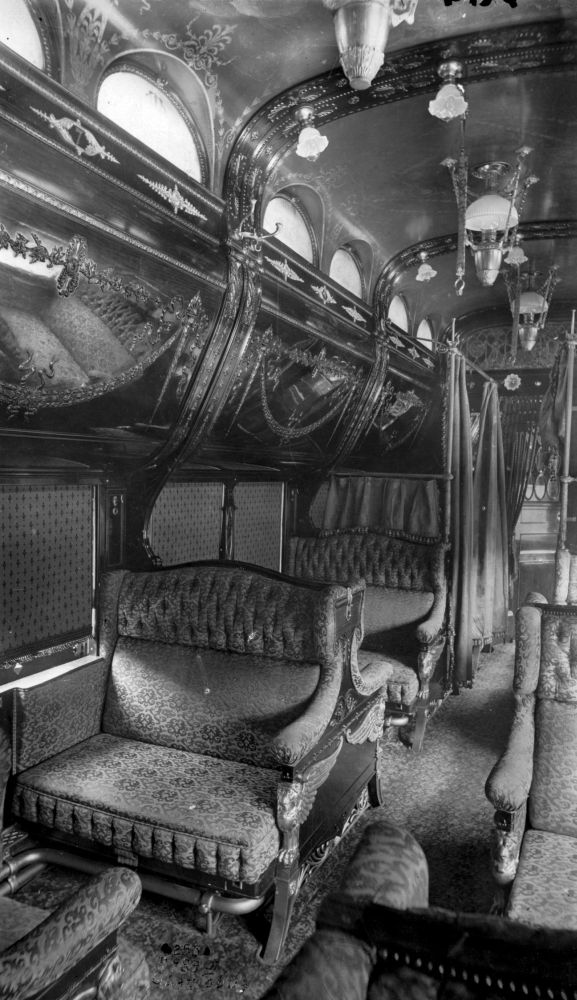
Pullman Sleeper Car. Upholstered Seats folded down into a bed much like today’s R.V. Trailers. The rounded overhead “bin” came down revealing another bed. Curtains provided privacy. Image: Public Domain
.
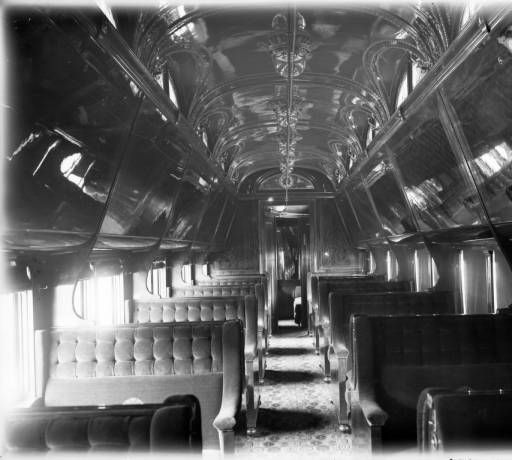
Pullman car interior, Colorado Midland Railway Co. 1890 to 1910.
.
Not all train passengers traveled in such luxury. Private rail cars were immensely expensive and accessible only by the most wealthy.
The middle class could afford to travel by rail, and many did so in comfort. After George Pullman traveled by train and found himself most uncomfortable he set about to improve the railway experience for the common traveler. He designed and manufactured Pullman Sleeper Cars (with washrooms at either end for men and for women) and the Pullman Dining Cars.
Yet the poorest of railway passengers paid a hefty rate for a hard bench on a crowded train. No amenities provided.
.
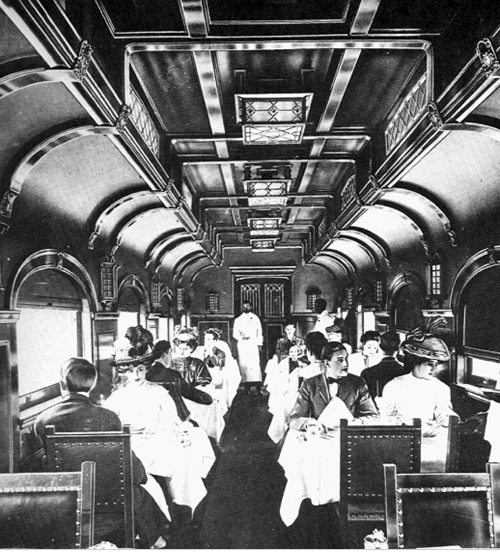
Pullman Dining Car. Passengers traveling in Sleeper Cars walked through the vestibule passageways from car to car to dine. Image: Public Domain
.

.
You’ll find all fifty titles in the American Mail-Order Bride Series on Amazon.

